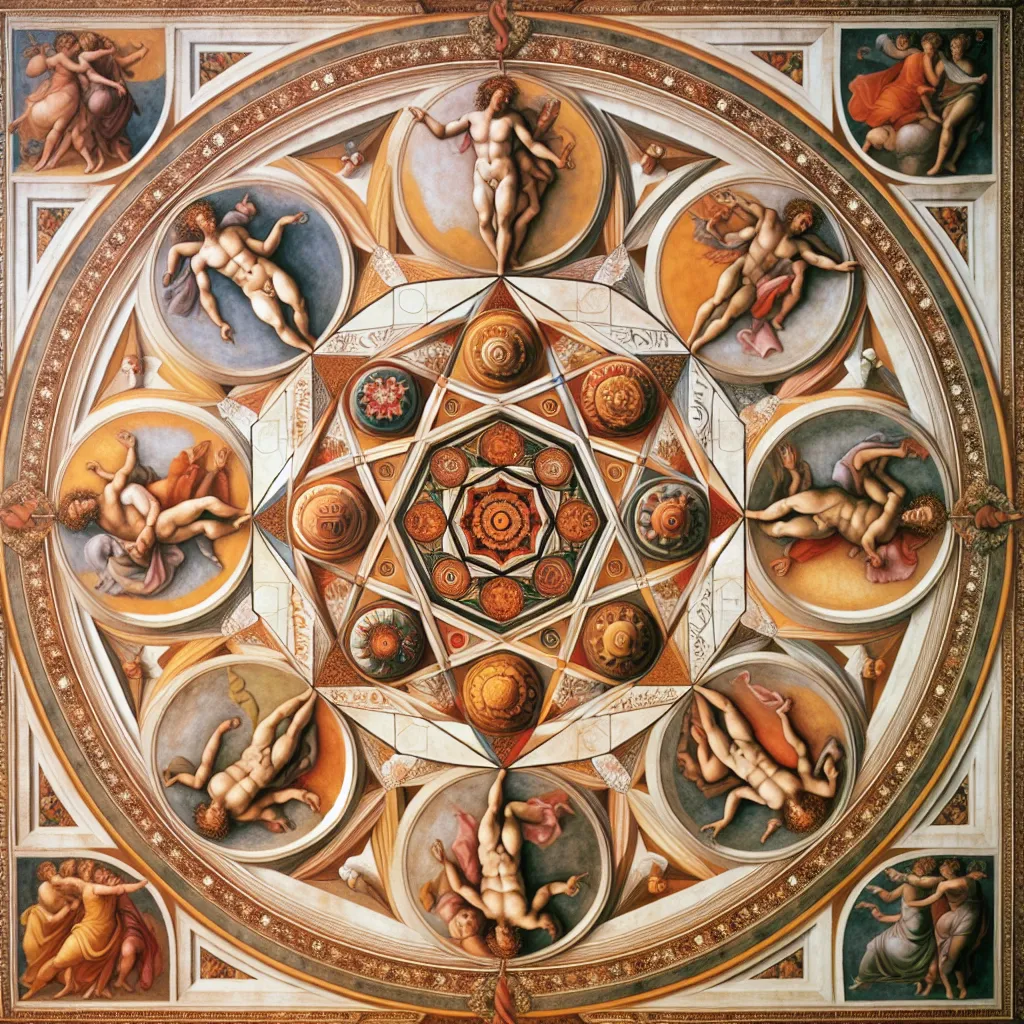
- Published on
- Authors

- Name
- You
The Symbolism of the Mandala in Tantra
Introduction: The Union of Mysticism and Science
The mandala, a complex and symmetrical design, holds profound significance in Tantric rituals. Rooted in ancient spiritual traditions, mandalas represent the cosmos metaphysically and symbolically. The intersection of mandalas in Tantra and principles of quantum mechanics offers a unique lens to comprehend the universe's enigmatic nature.
The Mystical Essence of Mandalas
What is a Mandala?
Derived from the Sanskrit word for "circle," a mandala is more than an artistic masterpiece:
| Elements | Description |
|---|---|
| Shape | Primarily circular, symbolizing infinity and the cyclical nature of existence. |
| Structure | Intricate, with concentric patterns emanating from a central point, often depicting deities and cosmic phenomena. |
| Purpose | Used in meditation, spiritual guidance, and as a tool for inducing trance states. |
Symbolism in Tantra
In Tantra, mandalas serve as spiritual maps guiding practitioners on a journey toward enlightenment and unity with the divine. Here, each element in a mandala is laden with meaning:
- Central Point (Bindu): Represents the origin of creation, akin to the singularity in big bang theory—an initial point from which the universe expands.
- Symmetry and Patterns: Reflects the balance and harmony of natural laws, resonating with the concept of symmetry in physical laws and quantum states.
- Circles and Squares: Circles symbolize unity and infinity; squares provide a sense of order and foundation, representing Earth and grounding.
Scientific Resonance: Quantum Mechanics and Mandalas
Quantum Entanglement and Mandalas
Quantum entanglement, the phenomenon where particles remain interconnected regardless of distance, resonates with the central theme of unity in mandalas. Just like the geometric intricacies of a mandala, quantum entanglement suggests that all parts of the universe are fundamentally linked.
The Holographic Principle
The intricacy of a mandala mirrors the holographic principle in physics, which posits that all information contained within a volume of space can be represented on its boundary surface. In a mandala, the microcosm reflects the macrocosm, hinting at a holographic nature of reality.
| Concept | Mandala Symbolism | Quantum Mechanics Parallel |
|---|---|---|
| Singularity | Central Point (Bindu) | Big Bang Singularity |
| Interconnectedness | Symmetry and Patterns | Quantum Entanglement |
| Holography | Microcosm-Macrocosm Reflection | Holographic Principle |
Mandalas in Practice: A Journey Within
Meditative Focus
Creating or visualizing a mandala can serve as a profound meditative practice, fostering internal harmony and enlightenment:
- Gaze: Focus gently on the center.
- Breathe: Synchronize your breath with the patterns.
- Reflect: Contemplate the interconnectedness and unity symbolized.
Ritualistic Use
In Tantric rituals, mandalas often serve as the stage for intricate ceremonies involving mantra chanting, deity invocation, and visualization exercises to cultivate spiritual energy and consciousness.
Conclusion: From Sacred Geometry to Quantum Realms
By weaving the mystical threads of Tantric mandalas with the scientific fabric of quantum mechanics, we unveil a tapestry that speaks to both the explicable and the enigmatic facets of the universe. The mandala, a timeless symbol, continues to guide seekers across dimensions, transcending the divide between the sacred and the scientific.
May your journey through the sacred geometry of mandalas and the quantum realms bring you closer to the ineffable unity that underlies all existence.
Namaste.
